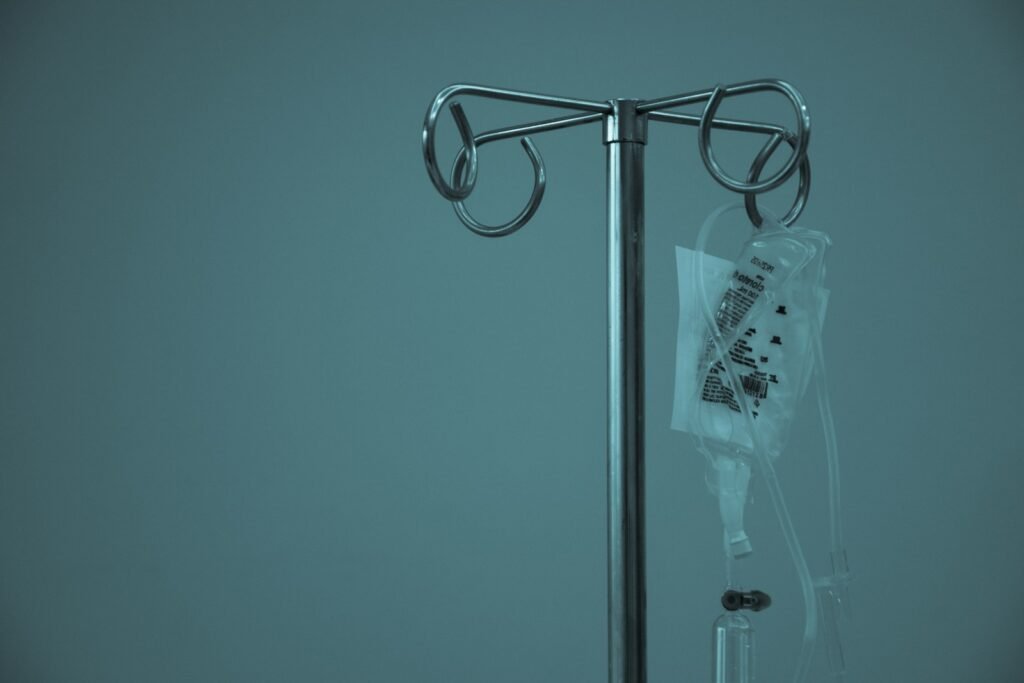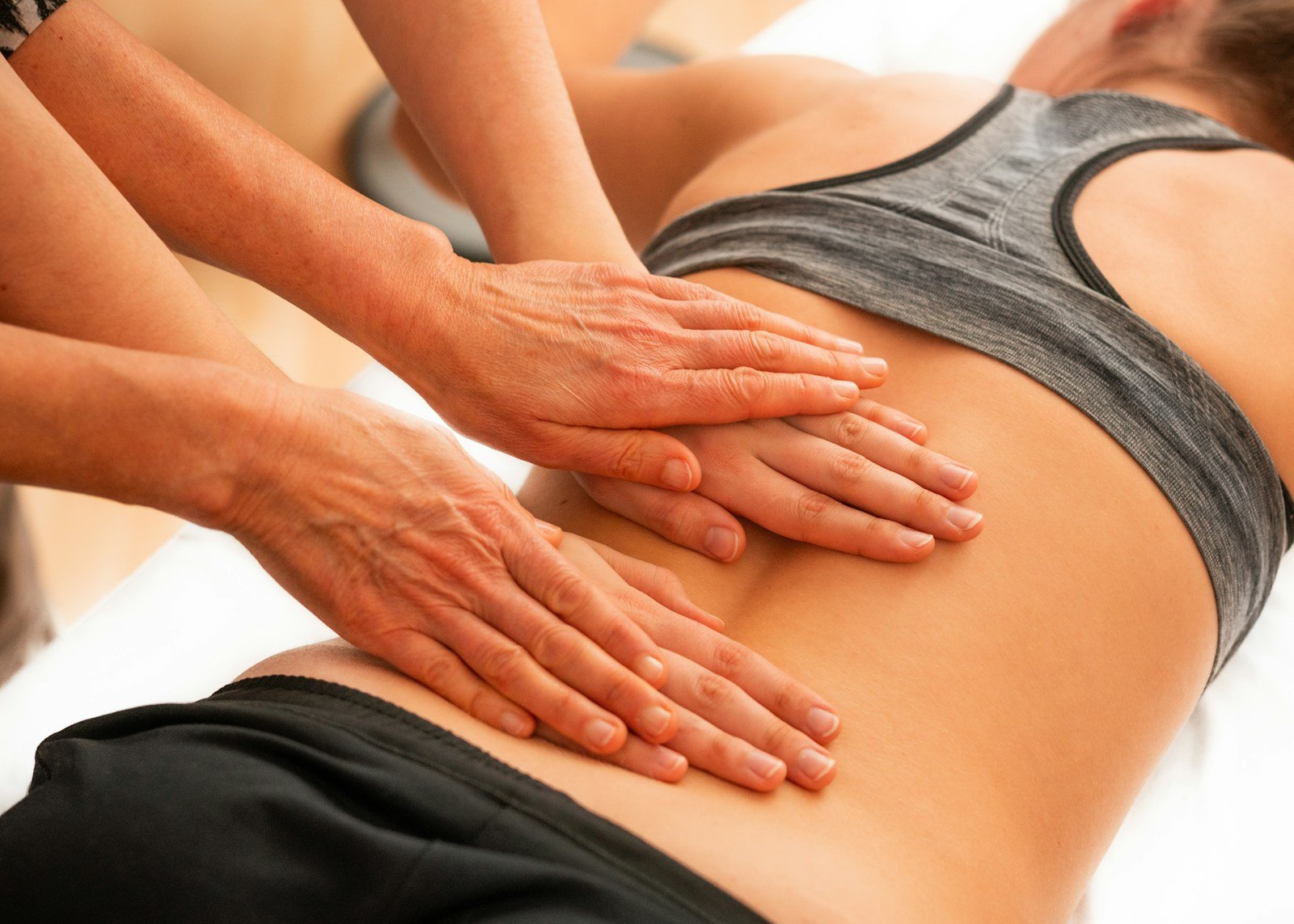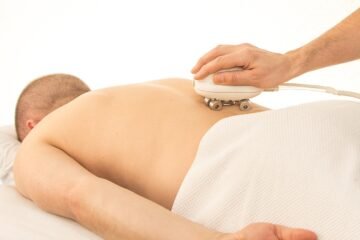Experiencing sudden middle back pain on the right side can be alarming and uncomfortable. Many people face this issue at some point in their lives. Understanding the causes, symptoms, and treatment options available can help you address the problem effectively. In this article, we will explore the various factors that contribute to sudden middle back pain on the right side, how to manage it, and when to seek medical attention.
What is Middle Back Pain?
Middle back pain, or thoracic pain, refers to discomfort in the upper and middle parts of the spine, which includes the thoracic vertebrae. This area supports the upper body and plays a crucial role in maintaining posture and mobility. While back pain can be felt on either side, sudden pain on the right side may indicate specific underlying issues that need attention.
Causes of Sudden Middle Back Pain on the Right Side
Sudden middle back pain on the right side can arise from various causes. Here are some common reasons:
1. Muscle Strain
One of the most common causes of sudden back pain is muscle strain. Lifting heavy objects, twisting awkwardly, or overexerting yourself during physical activities can lead to muscle tears or pulls.
2. Poor Posture
Maintaining poor posture while sitting or standing can strain the muscles and ligaments in your back, leading to discomfort. Slouching or leaning forward for prolonged periods may contribute to sudden pain.
3. Herniated Disc
A herniated disc occurs when the soft cushion between the vertebrae protrudes out, pressing on nearby nerves. This condition can cause sudden pain that radiates to one side of the body.
4. Spinal Conditions
Certain spinal conditions, such as scoliosis (curvature of the spine) or osteoarthritis, can lead to sudden pain in the back. These conditions may create additional stress on the spine and surrounding muscles.
5. Injuries
Injuries from accidents, falls, or sports activities can cause immediate pain. Fractures or damage to the spine may lead to sudden discomfort in the middle back.
6. Internal Organ Issues
Sometimes, sudden middle back pain on the right side may be related to internal organ issues, such as gallbladder problems or kidney stones. In these cases, the pain may be accompanied by other symptoms, including nausea or changes in urination.
7. Stress and Anxiety
Emotional stress and anxiety can lead to muscle tension in the back. When under stress, individuals may unconsciously tighten their muscles, resulting in sudden pain.
Symptoms Associated with Sudden Middle Back Pain
Identifying the symptoms associated with sudden middle back pain can help determine the cause and the appropriate treatment. Some common symptoms include:
- Sharp or stabbing pain in the middle back
- Pain that radiates to the right side or other areas
- Muscle stiffness or tightness
- Difficulty moving or bending
- Pain that worsens with certain movements or positions
- Possible accompanying symptoms like fever, chills, or changes in bowel habits (which may indicate a more serious condition)
When to Seek Medical Attention
It’s essential to consult a healthcare professional if you experience sudden middle back pain, especially if it is severe or persistent. You should seek medical attention if you have:
- Pain that lasts more than a few days
- Difficulty breathing or chest pain
- Weakness or numbness in your arms or legs
- Pain accompanied by fever or unexplained weight loss
- Changes in bowel or bladder control
Treatment Options for Sudden Middle Back Pain

Treatment for sudden middle back pain on the right side will depend on the underlying cause. Here are some common approaches to managing the pain:
1. Rest and Activity Modification
Rest is crucial after experiencing sudden back pain. However, complete bed rest is not always recommended. Gentle activity modifications can help keep your body moving without exacerbating the pain.
2. Physical Therapy
Physical therapy can provide valuable techniques to strengthen the back muscles, improve posture, and increase flexibility. A trained therapist can develop a tailored exercise program to address your specific needs.
3. Pain Relief Medications
Over-the-counter medications, such as ibuprofen or acetaminophen, can help alleviate pain and reduce inflammation. Always follow the recommended dosage and consult a healthcare provider if you have any concerns.
4. Hot and Cold Therapy
Applying heat or cold packs to the affected area can provide relief. Cold therapy may reduce swelling and numb the pain, while heat therapy can relax tense muscles and improve blood flow.
5. Chiropractic Care
Chiropractic adjustments can help realign the spine and relieve pressure on nerves. Many individuals find relief from back pain through regular chiropractic care.
6. Stress Management Techniques
If stress is contributing to your back pain, consider practicing relaxation techniques such as deep breathing, yoga, or meditation. These methods can help reduce muscle tension and promote overall well-being.
Table: Common Causes and Treatment Options for Sudden Middle Back Pain on the Right Side
| Cause | Symptoms | Treatment Options |
| Muscle Strain | Sharp pain, stiffness | Rest, physical therapy, pain relief |
| Poor Posture | Discomfort while sitting or standing | Posture correction, ergonomic changes |
| Herniated Disc | Radiating pain, numbness | Rest, physical therapy, possible surgery |
| Spinal Conditions | General back pain, stiffness | Physical therapy, chiropractic care |
| Injuries | Sudden sharp pain after trauma | Rest, pain relief, possible imaging |
| Internal Organ Issues | Pain with nausea, changes in urination | Medical evaluation, treatment of underlying issue |
| Stress and Anxiety | Muscle tension, tightness | Stress management techniques |
Sudden Middle Back Pain Right Side: Prevention and Self-Care Strategies
In the first part of our article, we discussed the causes, symptoms, and treatment options for sudden middle back pain on the right side. Now, we will explore effective prevention strategies, lifestyle changes, and self-care tips that can help you manage and reduce the risk of developing back pain in the future.
Prevention Strategies
Taking proactive steps can significantly reduce the likelihood of experiencing sudden middle back pain. Here are some key prevention strategies:
1. Maintain Good Posture
Good posture is essential for minimizing stress on your back. Here are some tips for maintaining proper posture:
- Sit Up Straight: Keep your back straight and shoulders relaxed when sitting. Your feet should be flat on the floor, and your knees should be at a right angle.
- Ergonomic Workspaces: If you work at a desk, invest in an ergonomic chair that supports your lower back. Ensure your computer screen is at eye level to avoid straining your neck.
- Standing Tall: When standing, distribute your weight evenly on both feet. Avoid locking your knees, and engage your core muscles for support.
2. Strengthen Your Core
A strong core supports your spine and helps prevent back pain. Incorporating core-strengthening exercises into your routine can be beneficial. Some effective exercises include:
- Planks: Hold a plank position on your elbows and toes, keeping your body straight. Start with 20-30 seconds and gradually increase the duration.
- Bridges: Lie on your back with your knees bent. Lift your hips towards the ceiling, squeezing your glutes at the top. Hold for a few seconds before lowering.
- Bird-Dog: Start on all fours, extend one arm forward and the opposite leg back while keeping your body stable. Hold for a few seconds before switching sides.
3. Practice Safe Lifting Techniques
Improper lifting can lead to sudden back pain. Follow these tips for safe lifting:
- Bend Your Knees: Always bend at your knees and keep your back straight when lifting heavy objects. Avoid bending at the waist.
- Keep Objects Close: Hold the object close to your body as you lift it. This reduces strain on your back.
- Ask for Help: If an object is too heavy or awkward to lift alone, ask for assistance or use tools like dollies or hand trucks.
4. Stay Active
Regular physical activity helps keep your back strong and flexible. Aim for at least 150 minutes of moderate exercise each week, including:
- Walking or Jogging: Simple and effective cardiovascular exercises that promote overall fitness.
- Swimming: A low-impact option that provides resistance and helps strengthen your back muscles.
- Yoga or Pilates: Both practices focus on flexibility, strength, and core stability, making them excellent for back health.
5. Maintain a Healthy Weight
Excess weight can put additional strain on your back, increasing the risk of pain. To maintain a healthy weight:
- Eat a Balanced Diet: Incorporate plenty of fruits, vegetables, whole grains, lean proteins, and healthy fats into your diet.
- Control Portion Sizes: Be mindful of portion sizes to help manage your caloric intake.
- Stay Hydrated: Drink plenty of water to support overall health and digestion.
6. Manage Stress
Chronic stress can lead to muscle tension and discomfort. Practice stress management techniques, such as:
- Deep Breathing: Take a few minutes each day to focus on your breathing. Inhale deeply through your nose and exhale slowly through your mouth.
- Mindfulness Meditation: Practice mindfulness or meditation to promote relaxation and mental clarity.
- Physical Activity: Engaging in physical activities can help relieve stress and improve your mood.
Self-Care Tips
Also Read: Lower Back Pain When Coughing: Causes, Symptoms, and Treatments
In addition to preventive measures, incorporating self-care practices into your routine can help manage back pain and promote recovery. Here are some self-care tips:
1. Apply Heat and Cold Therapy
Using heat and cold packs can alleviate pain and reduce inflammation. Here’s how to use them effectively:
- Cold Therapy: Apply a cold pack to the affected area for 15-20 minutes to reduce swelling and numb pain. Use this method for the first 48 hours after an injury.
- Heat Therapy: After the initial swelling has gone down, switch to heat therapy. Apply a warm compress or heating pad to relax tight muscles and improve blood flow.
2. Stay Hydrated
Drinking enough water is essential for maintaining spinal health. Proper hydration supports the discs in your spine and helps reduce inflammation. Aim for at least eight 8-ounce glasses of water daily, adjusting based on activity levels.
3. Consider Over-the-Counter Pain Relief
Over-the-counter medications can help manage sudden middle back pain. Some common options include:
- Ibuprofen (Advil, Motrin): This non-steroidal anti-inflammatory drug (NSAID) can help reduce pain and inflammation.
- Acetaminophen (Tylenol): This pain reliever can help alleviate discomfort without affecting inflammation.
Always follow the recommended dosage and consult with a healthcare professional if you have any concerns or pre-existing conditions.
4. Engage in Gentle Stretching
Gentle stretching can help improve flexibility and relieve muscle tension. Incorporate the following stretches into your routine:
- Cat-Cow Stretch: Start on all fours and alternate between arching your back (cat) and lifting your head and tailbone (cow) to stretch and mobilize your spine.
- Seated Spinal Twist: Sit cross-legged, and twist your torso to one side while placing your opposite hand on your knee. Hold for a few seconds before switching sides.
- Child’s Pose: Kneel on the floor, sit back on your heels, and stretch your arms forward while lowering your chest to the ground. This pose helps stretch the back and relieve tension.
5. Sleep on a Supportive Mattress
A supportive mattress can make a significant difference in your back health. Consider these tips for choosing the right mattress:
- Medium-Firm Mattress: A medium-firm mattress can provide the right balance of support and comfort for your back.
- Sleep Position: Your sleep position matters. If you sleep on your back, place a pillow under your knees. If you sleep on your side, place a pillow between your knees to align your spine.
6. Follow Up with a Healthcare Professional
If you continue to experience sudden middle back pain or if it worsens over time, schedule an appointment with a healthcare professional. They can assess your condition, provide further recommendations, and, if necessary, refer you to specialists for more advanced care.
Conclusion

Sudden middle back pain on the right side can be a frustrating and debilitating experience. By understanding the causes, implementing preventive measures, and practicing self-care, you can significantly reduce the risk of experiencing back pain and improve your overall quality of life. Remember, if your symptoms persist or worsen, it’s crucial to seek medical attention for a proper diagnosis and treatment plan. Taking care of your back today will help ensure a healthier tomorrow.




